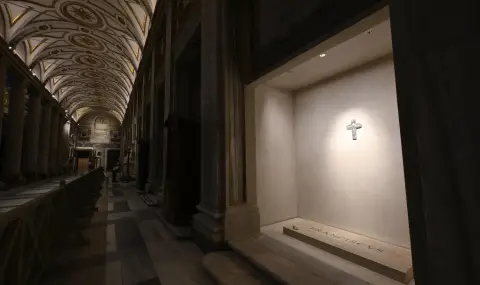From today, the tomb of Pope Francis in the Basilica of Santa Maria Maggiore in Rome will be open to worshippers, the Vatican announced at the end of last week, Italian media outlets, including ANSA, Virgilio Noticias and Messagerro, reported.
The Pope, who died on April 21 of a stroke, was laid to rest yesterday in a tomb separated between two of the chapels within the Roman basilica, after a mourning ceremony held in the Vatican. The ceremony of placing the coffin in the tomb lasted about half an hour yesterday, and then the Vatican published a short video of it.
In fact, the coffin with the mortal remains of a pope was placed in a tomb, separated in a niche or loculus in the wall, and this procedure is known as tumulation, notes the Italian publication “Fanpage“.
This type of burial follows a strict regulation that provides for several phases, starting with the hermetic sealing of the coffin. In the case of the pope, it was wooden with a zinc coating. The hermetic sealing guarantees the isolation of the body in accordance with hygiene and sanitary standards, given that it will remain figuratively "embedded" or "walled in the wall". After placing the coffin in the tomb, which was set aside in the appropriate wall niche, the tomb was sealed with a marble slab, cement, and other construction materials.
In the history of the Holy See, several popes have been laid to rest in similar tombs outside the Vatican, including Gregory XII in Recanati, Benedict XII and John XXII in Avignon, and Gregory X in Arezzo. The last pope to be buried in this way outside the Vatican was Leo XIII, who died in 1903. and buried in the Basilica of San Giovanni in Laterano in Rome.
The tombs of the popes are part of the church and cultural heritage, the publication also recalls.
Pope Francis asked to be buried in the Roman basilica of "Santa Maria Maggiore", where a famous Byzantine icon of the Virgin and Child is located, before which he had the habit of praying before and after each apostolic journey.
